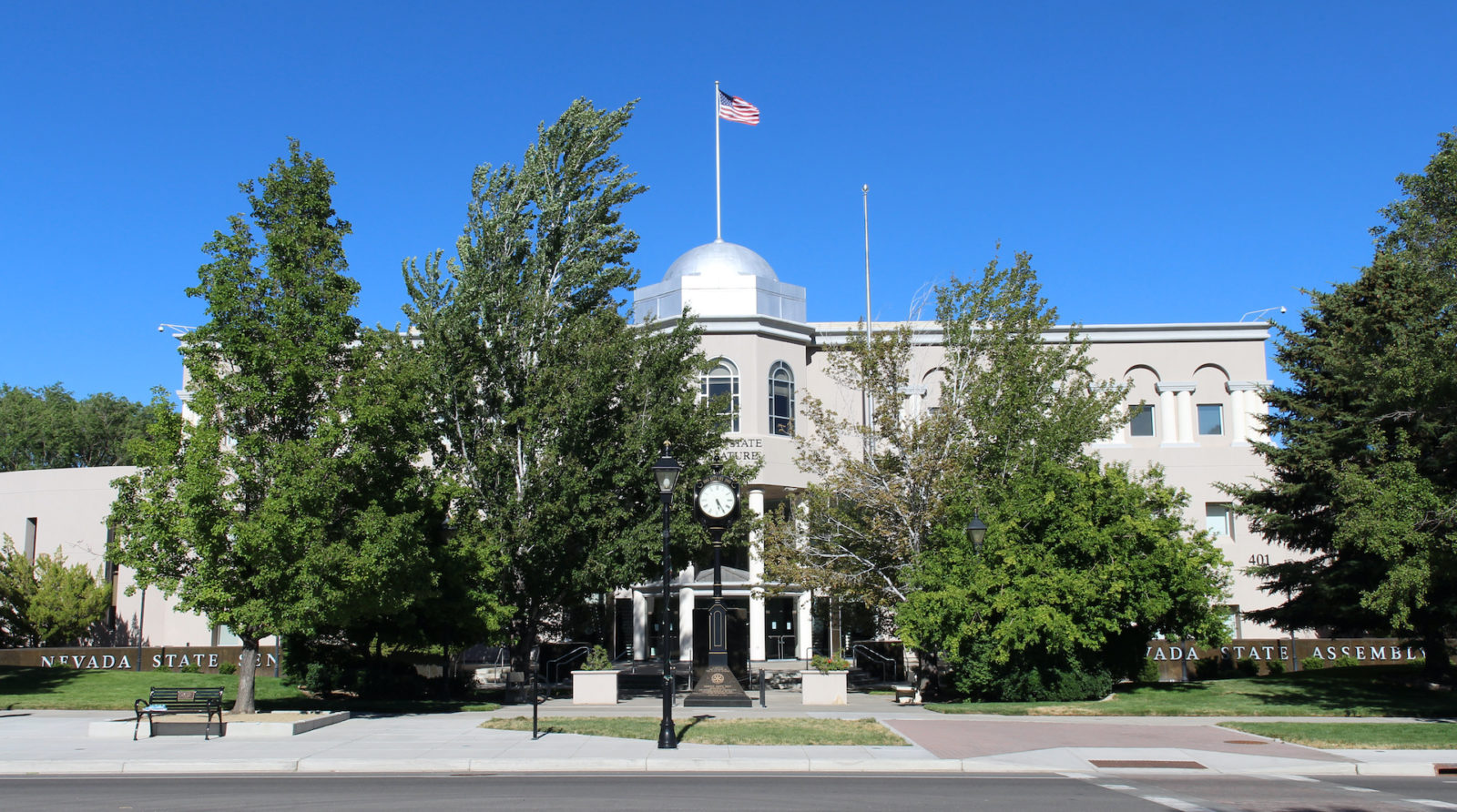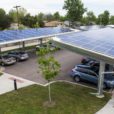In late August, Nevada launched the Nevada Climate Initiative, a program described by a state press release as “first-of-a-kind.” The initiative is not unique by virtue of existence — 23 states have released climate action plans, and a handful more are in the process of updating one, according to the Center for Climate and Energy Solutions. What distinguishes Nevada’s is its dedicated website and prioritization of public input in informing state climate policy.
The initiative rollout follows an executive order by Governor Sisolak in November of last year tasking the Governor’s Office of Energy and the state Department of Conservation and Natural Resources with developing a State Climate Strategy by December 1st of this year. Much of the initiative’s current work is focused on collecting public input to inform this imminent climate strategy.
“Our intention is to really set the stage for where we might go moving forward,” Kristen Averyt, who was hired in March of this year as Nevada’s first climate policy coordinator, told Climate XChange. “We really want to make sure people are engaged in conversations around climate and where we want to go as a state, both in respect to mitigation and resilience.”
A multi-faceted, digital approach
The Nevada Climate Initiative doesn’t rely on just one platform to get its message out. In addition to a sleek and colorful website, the team is active on both Twitter and Facebook, posting information about not only their own programs but climate action in general. Having a forward-thinking, engaging digital presence is crucial to successful climate communication, Averyt said, because the public needs to recognize climate action is an ongoing process. It’s also a great way to reach many people at once.
“I don’t know about you, but I’m spending more time at my computer and more time engaging with social media because I’m not necessarily engaging in person,” Averyt said. “So, it was really important we amplified our message on digital platforms. That way, we are reaching a lot of different people.”
While Averyt does “dearly wish” she and her team could talk to citizens face-to-face, she recognizes the impracticality of that during a pandemic. So, like many organizations these days, Averyt got creative with how to interact with the public. One method her team has been using to conduct outreach is through virtual listening sessions, which are public forums for Nevadans conducted over Zoom. While only Nevada residents can register for these calls, recordings are published on the initiative’s website. Each session focuses on a broad climate-related issue, such as climate justice, land use, transportation, or economic recovery. In late September, the Initiative announced they would add a listening session specifically for Nevada’s Spanish-speaking community, which was held on October 13th, a testament to the efforts of the Initiative to provide for a variety of inclusive engagement opportunities.
“We want to hear people’s ideas, their response to climate, what they care about. We’ve had incredible interest, so much that we had to expand the technical platform we were using,” Averyt said. She estimates each session has an average of 200 participants, from the concerned citizen to the industry representative to the elected official. “We have a streaming link as well now, just to accommodate all the people that want to participate.”
Informing Nevada’s next steps
As Averyt began working on the State Climate Strategy, which will be rolled out later this year, it became clear that there were key questions she and her team didn’t have the answers to. Are people aware the state is taking climate action? What climate-related issues are citizens most concerned about? Does prioritization of these issues vary depending on where a person lives within the state? In order to answer these questions, she reached out to Emma Bloomfield, an assistant professor of communication studies at University of Nevada, Las Vegas, and asked her to develop a survey.
“Thinking locally about community impact is a really effective way to get people to advocate for climate action,” Bloomfield told Climate XChange. “Getting people’s voices on that can reinforce the importance of the topic.”
The survey lives on the Nevada Climate Initiative’s website, and, as of September 18, had garnered over 1,100 responses. Bloomfield is happy with these numbers, saying any number of responses over 1,000 allows for statistical analysis to point to actual trends and differences, rather than just randomness in the data. However, she hopes to hit at least 2,000 responses by the time the survey closes in mid-October.
Nevada leans purple, Bloomfield said, meaning voters are split fairly equally between the Democratic and Republican parties. Bloomfield expects to see these variances reflected in citizens’ attitudes toward climate change as well, noting the state is home to residents who are not concerned about the climate crisis or are skeptical of climate change. Their responses matter in shaping public policy as well, Bloomfield said.
“I think a lot can be done by acknowledging people feel that way,” she said. “It’s obviously against science, and we want to create policy informed by science and the majority opinion. But we can’t just forget or ignore certain opinions.”
Does public engagement make a difference?
The Nevada Climate Initiative team hopes public engagement will strengthen the resulting climate policy plan. Bloomfield said it adds trust in the system, creating legitimacy and credibility that would not exist if it was just “politicians making decisions for people.” This isn’t the first time that the inclusion of many voices has been touted as a method for spurring effective climate action.
Camila Thorndike, CXC’s National Advocacy Director, is an environmental advocate who helped mobilize thousands of individuals in Washington D.C. to fight for policy that would create a carbon fee and rebate along with other climate reforms. Part of the coalition’s success, she said, came from the diversity of voices represented and the direct involvement of lawmakers in this grassroots movement.
“I’m really proud of what we did there, and the result, because everybody could see themselves in the policy, and that’s the most important thing,” Thorndike said on a Climate XChange webinar in early August.
The logic holds in the other direction too. Lack of public participation in government climate action can fuel resistance to the policies, reported researchers at University of Groningen in the Netherlands. The study points to the “Yellow Vest” protests in France, which were spurred when the French government increased the country’s fuel tax as part of an effort to address climate change. While the “Yellow Vest” unrest was sparked by the fuel-tax hike, it evolved into what The Atlantic called “a crisis of representative democracy.” Many French citizens felt ignored by the nation’s president, Emmanuel Macron, The Atlantic said, viewing him “as arrogant and out of touch.” The French people were demanding to be engaged in their own politics.
“In climate policy in particular, public participation is rapidly being incorporated into political agendas,” the researchers wrote. “For example, in response to the Yellow vests movement in France, President Macron invited all citizens to express their concerns about their country’s political issues in the ‘Grand Débat National.’”
Nevada’s ever-evolving climate plans
The climate strategy will be a living document, Averyt said. In other words, the work produced in December is not the final word on climate action in Nevada. As more information is collected, new sections will be added and current sections will be updated.
Each policy proposed in the strategy is evaluated using four different metrics: Potential to reduce greenhouse gas emissions, climate justice impacts, how much it will cost, and the legal feasibility of implementing the policy. Each of these metrics for each policy will be rated on a color scale from red to green, representing how certain the information is in that section. If a certain policy has a red, or uncertain, rating for the climate justice metric, Averyt said, the team likely needs to have more conversations with community members to ensure the policy will not inadvertently have negative impacts on at-risk groups.
Bloomfield advises that other states who want to shape policy around a public survey should develop a team of scholars and government employees that truly believe in the spirit of the project. In order for public engagement to mean something, it needs to be included in the policies implemented, she said.
“The worst thing to do would be to do the survey, analyze the results, and then the climate policy doesn’t reflect the public opinion,” Bloomfield said. “You want to be on the same page about how you are going to use that information.”
Currently, there is no policy, including carbon pricing, that is off the table, according to Averyt. The climate strategy is all about assembling a toolbox for Nevada to deploy in the coming decades.
“It’s laying out ‘What are our different options?’” Averyt said. “We are not going to be making specific recommendations on policies that need to be implemented, we are going to be setting the stage and providing a lot of information. We have to walk before we run.”









